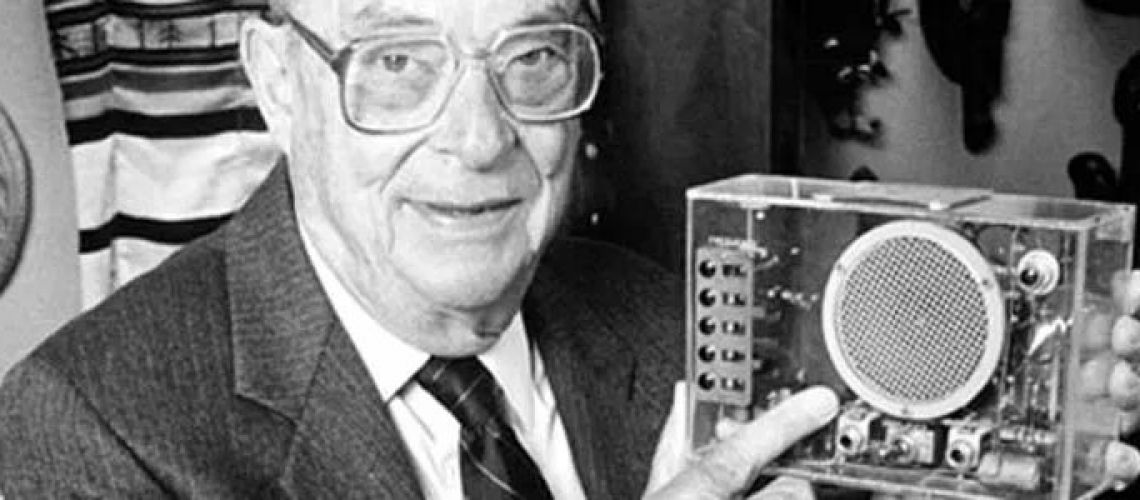He is one of the inventors of the transistor: Who is Walter Houser Brattain?
In one of his interviews, he admitted that the only thing he regrets about inventing the transistor is its use for rock and roll music.

Walter Houser Brattain was born on February 10, 1902, in China. His parents, who were American, were teachers. He graduated from Whitman College with a BA in physics and mathematics. By his own admission, the reason he chose these disciplines was because he was ordinary and just good at these subjects and didn't want to do something he was average. Thanks to meeting Joseph Becker at an event organized by the American Physical Society, he started working at Bell Laboratories, where he would spend most of his career and make his greatest discoveries. Becker said there is only one requirement for employees. He wanted employees to be able to challenge their managers when appropriate. As a country-raised cowboy, this was no problem for Brattain.
Walter Houser Brattain (February 10, 1902 – October 13, 1987) was an American physicist at Bell Labs who, along with fellow scientists John Bardeen and William Shockley, invented the point-contact transistor in December 1947. They shared the 1956 Nobel Prize in Physics for their invention. Brattain devoted much of his life to research on surface states.
At Bell Laboratories, Brattain worked closely with John Bardeen (who later won a two-time Nobel Prize), making a very harmonious duo. While Brattain specialized in experimental work, Bardeen was a resourceful theorist who developed hypotheses and additional research ideas. This allowed the team to effectively amplify the electrical signal. As a result of these joint efforts, they succeeded in making the first working point-contact transistor on December 16, 1947. The design was still being developed, including choosing the right materials. Finally, on December 23, the team presented their transistors to their colleagues. It consisted of a plastic triangle, a block of germanium, and gold contacts. These materials showed the best amplification effect at different frequencies.
It was not necessary to convince anyone with an interest in electronics about the importance of discovery. It was a groundbreaking invention that allowed the devices and systems we know today to be miniaturized compared to the electron tubes used at the time. Not surprisingly, the team was awarded the Nobel Prize in 1956. In addition to Brattain and Bardeen, William Shockley, who only played the supervisory role, was also honored.
After leaving Bell Labs, Brattain returned to Whitman College to begin teaching. In one of his interviews, he admitted that the only thing he regrets about inventing the transistor is its use for rock and roll music.
As difficult as it is to overstate the influence of transistors in the development of electronics, it is also difficult to enumerate all the areas where we see the results of Brattain's invention today. The invention of the transistor is at the root of countless integrated circuits, both analog (from audio amplifiers to operational amplifiers) and digital. Logic gates and logic circuits are the simplest examples of digital circuits, and they are still widely used in simple applications due to their reliability and simple design. Another well-known transistor-based component is the NE 555 timer, which is probably the most used integrated circuit in history.
However, these are just a few examples. The transistor has been the foundation of modern electronics. It is used in processors and microcontrollers. Young enthusiasts of programmable electronics, who take advantage of the ease of programming an Arduino or Raspberry Pi, actually still benefit from Brattain's invention. Just like any mobile phone or standard computer user. If we look at our daily life through a microscope, we can see that transistors are also found in our credit cards, monthly subscription tickets, and even in our card keys. Let's not forget the most important thing. In the era of digitization, we use transistor-based digital memories while trying to save almost all data as bits.
Transistors have gone through extreme miniaturization (we usually measure their size in nanometers today) and we often see them as parts of complex electronic circuits. Let's not forget, however, that good old transistors still find many uses for themselves.
